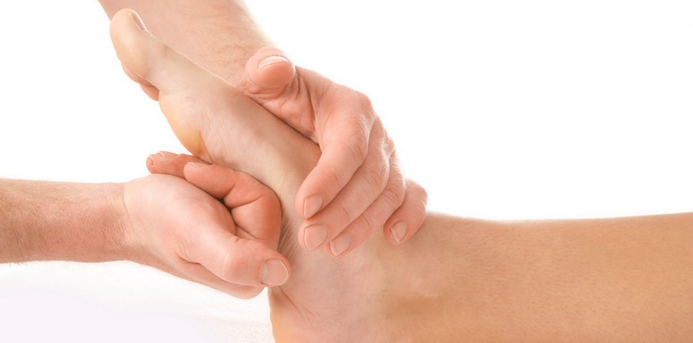The plantar fascia is the connective tissue that runs from your heel bone to your toes. It acts as part of your foot’s shock absorption system and provides support for your arch. This tight band flexes and contracts as you walk or run.
What is Plantar Fasciitis?
Plantar fasciitis is an injury to the plantar fascia, which generally involves micro tears, but in extreme cases, the strong fibrous band may rupture. This painful injury severely restricts your activity. It’s generally felt when you first put weight on your foot in the morning, at the beginning and end of exercise, and when you stand after a period of sitting. You many feel pain in your heel or more toward your arch. It oftentimes feels like a bruise or rock in your shoe.
Causes
According to Dr. Eric Chehab, at Illinois Bone and Joint Institute, 40- and 50-year-olds who participate in repetitive impact activities are at risk for this injury. Other contributing factors include: insufficient warm-up before exercise or exertion, sudden increases in training, tight muscles of the lower leg, wearing improper shoes, standing for long periods of time and excess body weight.
Treatment
Mild plantar fasciitis is treated by cutting back or taking time off impact activities (running, walking, tennis), stretching lower leg muscles, and icing. Wearing a night splint to keep the foot in a flexed position and gently massaging the area with a golf ball or frozen water bottle will encourage healing. Once the pain begins to subside, strengthen the tissue by using your toes to gather a dishtowel on the floor. According to Chehab, severe cases may require cortisone injections, partial or full surgical release of the plantar fascia and shock wave therapy.
Prevention
Warm the short, tight muscles of your feet and lower legs before getting out of bed. Flex your toes toward your head and massage your calves. Slip into supportive shoes for the day. Allow for adequate warm-up before exercise and focus on stretching after your workout. Consider adding non-weight bearing activities to your fitness routine like swimming and yoga. Maintain a healthy body weight to prevent excess pressure on foot muscles. If you have had plantar fasciitis, you will know when to take a few days off, wear your night splint, stretch and ice to keep the foot pain away.
It is estimated that 10 percent of the population will get plantar fasciitis, but if you take steps to prevent or treat it promptly, you’ll be able to maintain your active lifestyle.

